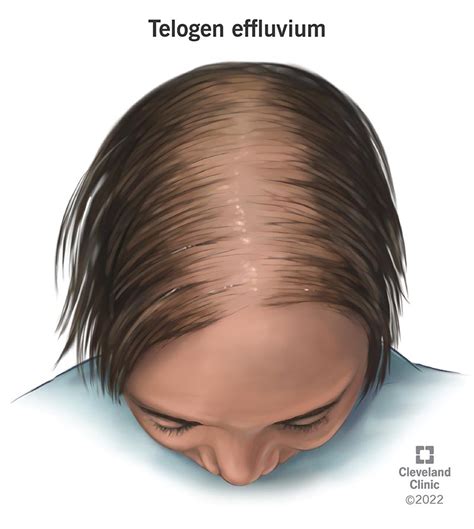Introduction
Hair loss, a common concern affecting millions of people worldwide, can manifest in various forms. One prevalent type is hair loss on top of the head, often referred to as vertex balding. This issue affects both men and women and can be a source of significant distress. In this article, we will delve into the causes, treatments, and coping mechanisms associated with hair loss on the top of the head.

Causes of Hair Loss on Top of Head
The causes of hair loss on top of the head can vary depending on individual circumstances. Some of the most common include:
Androgenetic Alopecia (Pattern Baldness)
This is the most common cause of hair loss on top of the head and is primarily influenced by genetic predisposition. In men, it typically presents as a receding hairline and thinning of hair at the crown. In women, it manifests as a widening of the part and diffuse thinning across the scalp.
Telogen Effluvium
Telogen effluvium is a temporary condition that triggers excessive hair shedding. It can be triggered by various factors such as stress, hormonal changes, childbirth, certain medications, and rapid weight loss.
Alopecia Areata
Alopecia areata is an autoimmune disorder that causes hair to fall out in circular or oval patches on the scalp. It can affect both men and women and may recur over time.
Thyroid Imbalance
An underactive or overactive thyroid can lead to hair loss, including on the top of the head.
Nutritional Deficiencies
Inadequate intake of certain nutrients, such as iron, vitamin D, and zinc, can contribute to hair loss.
Treatments for Hair Loss on Top of Head
Various treatment options are available for hair loss on top of the head, depending on the underlying cause. Some common approaches include:
Minoxidil
Minoxidil is a topical medication that is FDA-approved for treating hair loss in both men and women. It works by stimulating hair follicles and promoting hair growth.
Finasteride
Finasteride is an oral medication that is FDA-approved for treating hair loss in men. It works by blocking the production of dihydrotestosterone (DHT), a hormone that contributes to hair loss.
Low-Level Laser Therapy (LLLT)
LLLT involves using low-level lasers to stimulate hair follicles and promote hair growth. It is a non-invasive and painless procedure that can be performed in a clinic or at home using a handheld device.
Follicular Unit Extraction (FUE)
FUE is a surgical procedure that involves extracting individual hair follicles from a donor area of the scalp and transplanting them to the area of hair loss.
Platelet-Rich Plasma (PRP) Therapy
PRP therapy involves injecting platelet-rich plasma into the scalp to stimulate hair growth. Platelet-rich plasma contains growth factors that can promote hair follicle regeneration.
Coping Mechanisms for Hair Loss
Adjusting to hair loss on top of the head can be challenging, both emotionally and psychologically. Here are some coping mechanisms to help you navigate this experience:
Embrace Your New Look
Consider experimenting with different hairstyles or using hairpieces or wigs to complement your current appearance.
Seek Professional Help
If hair loss is affecting your self-esteem or well-being, consider seeking therapy or counseling to address the emotional impact.
Connect with Others
Join support groups or online forums where you can connect with others who are going through similar experiences.
Tips and Tricks
Be Gentle with Your Hair
Avoid harsh brushing or excessive styling that can damage hair follicles.
Maintain a Healthy Lifestyle
A balanced diet, regular exercise, and adequate sleep can promote overall hair health.
Manage Stress
Stress can contribute to hair loss, so finding healthy ways to manage stress is crucial.
Consult a Dermatologist
A dermatologist can help diagnose the cause of your hair loss and recommend appropriate treatment options.
Common Mistakes to Avoid
Ignoring the Problem
Ignoring hair loss will not make it go away. Seeking professional help early on is essential for timely diagnosis and treatment.
Using Unproven Remedies
Be wary of using unproven or over-the-counter remedies for hair loss. Some products may contain harmful ingredients or have no scientific basis.
Expecting Instant Results
Hair loss treatment can take time to produce visible results. Be patient and consistent with your treatment regimen.
FAQs
Q: Can hair loss on top of the head be reversed?
A: Some types of hair loss on top of the head can be reversed with appropriate treatment. However, it is essential to consult a dermatologist to determine if your condition is reversible.
Q: Is hair loss on top of the head more common in men or women?
A: Androgenetic alopecia is more common in men than women. However, women can also experience hair loss on top of the head, particularly after menopause.
Q: Can stress cause hair loss on top of the head?
A: Yes, stress can trigger telogen effluvium, which can lead to temporary hair loss on top of the head.
Q: What is the difference between minoxidil and finasteride?
A: Minoxidil is a topical medication that stimulates hair growth. Finasteride is an oral medication that blocks DHT production, which is a factor in hair loss.
Conclusion
Hair loss on top of the head is a common concern that can affect both men and women. Understanding the causes, treatments, and coping mechanisms associated with this issue is essential for managing hair loss effectively. By seeking professional advice, embracing your new look, and implementing healthy habits, you can navigate this experience with confidence and well-being.
